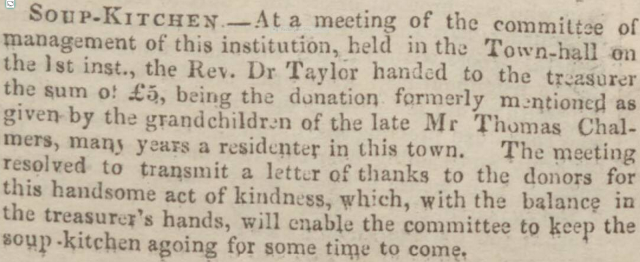Now Anne (Unknown) Whitfield's granddaughter, Anne Bland, married Robert Elliot, who appears to have come from a fairly prosperous middle-class family but who was essentially a tradesman (he built a career as a currier in both Hammersmith, England and later in Ontario). Anne Whitfield's daughter, Eleanor Whitfield, was the wife of James Bland, a gardener in Hammersmith (his brother, Stephen Bland, was a sword-cutler to the King, which sounds pretty fancy but is still a job, i.e. not something a nobleman would do).
However, it's interesting to look at the family that James and Anne Whitfield's daughter Margaret married into. Eleanor's sister married a man named Lionel Spencer Berkeley.
 |
| From Notes and Queries, p. 418, ed. William White. |
Here's an excerpt of what Volume III of The Peerage of England by Arthur Collins has to say about the Berkeley family:
So, in case you're overwhelmed by the meandering style of this family history, let me set out some key points.
- Margaret Whitfield's father-in-law, Henry Berkeley, held positions in which he directly served English royalty (he was page of honour to Queen Anne, and Master of the Horse to George I). He had a distinguished military career and was a Member of Parliament for many years.
- Her husband's grandfather was the 2nd Earl of Berkeley. He was for a time the equivalent of an English Ambassador to Holland, and was later, among many other positions, on the Privy Council of England.
- Her husband's uncle was the 3rd Earl of Berkeley. He also had a distinguished military career, which culminated in the position of Vice-Admiral of Great Britain, and like his father was on the Privy Council.
 | |||
| James Berkeley, 3rd Earl of Berkeley, Margaret Whitfield's Uncle-in-law. |
I could go on some more about the Berkeleys, but the point is, this is quite a family to be attached to. Not to mention that:
- Lionel Spencer Berkeley's mother, Mary Cornwall or Cornewall, was the daughter of the wealthy Colonel Henry Cornewall, M.P. for Weoboly, Hereford and Herefordshire, and Susanna Williams, daughter of Sir John Williams. Her brother Velters was also an MP, and her other brothers were all officers in the military.
- His paternal grandmother (wife of Charles Berkeley) was Elizabeth Noel. She was the daughter of Baptist Noel, 3rd Viscount of Campden, and his third wife Hester Wotton.
So who did James and Anne Whitfield's other children marry? The only other sibling of Eleanor's who lived long enough to marry was her sister Anne, who married a man named John Latimer in 1746. This is probably the same John Latimer (or Lattimer, as it is spelled in the apprenticeship documents) who was her father's apprentice and paid him an apprenticeship fee in 1731. They had a son named Cotton Edwards Latimer and a daughter named Margaret Sophia Latimer. What was John's social standing? I haven't yet found his family, but I'm still trying. Remember that James Whitfield's father was from Headington? Coincidentally, there is a Latimer family (headed by Edward Latimer, wine merchant (1774-1845) who had a thriving business in Headington and owned a place called Headington House from 1815-1848. Of course this is later than James's time, and this Edward appears to have been born elsewhere. As far as I can tell, they are not connected. Dead ends everywhere!
The Whitfields also seem to have a connection to Twickenham (both James Whitfield and his wife died there). There probably isn't a relationship here either, but the Twickenham Museum Website has some information about a Mr. George Whitefield, pronounced Whitfield, and his religious influence in Twickenham. Yesterday I went to the Toronto Reference Library where most of the library's genealogical material is held, and looked at two books on the history of Twickenham. One (Twickenham Past, a Visual History of Twickenham and Whitton by the Borough of Twickenham Local History Society, published in 1993) was quite interesting but had nothing of direct relevance. (I did discover that Twickenham during the Whitfield's time was awash with famous writers, such as Alexander Pope). The second book (Memorials of Twickenham, Parochial and Topographical by Richard Stuteley Cobbett, published in 1872) had some information which I can't connect to our family at the moment. One chapter contains excerpts from the register of Parish burials from 1743 to 1762, and it contains the two following entries, on pages 68 and 71 respectively:
"The wife of Lionel Berkeley, Esq. May 6, 1751."
"Cornwall Berkeley, infant son of Lionel Berkeley, Esq., August 30, 1753".
And on page 100 there is this entry, describing memorials on the floor of the church nave:
"Here lies the body of Martha Berkley (the faithful widow of Lionel Spencer Berkley) who departed this life the 29th day of April, 1751, in the 30th year of her age. Whose conduct was an ornament to herself, a pattern to her sex, and a pleasure to her husband".
So, since he is dead by 1751, this is obviously some other Lionel Spencer Berkeley. There is a Lionel Spencer Berkeley who married a Martha Colthart in St. Mary's Church, St. Marylebone, London, on March 28, 1740, according to England, Select Marriages, 1538-1973. The Registers of Marriage of St. Mary le Bone, Middlesex, 1668-1812 and of Oxford Chapel, Vere street, St. Mary le Bone, 1736-1754 also has the following entry under marriages in 1740:
"March 28. Lionel Spencer Berkeley Esq. of St. Anne's, Westm, & Martha Colthart of St. James, Westm. L."
The two Lionel Spencer Berkeleys were probably related, although I don't know how. So it turns out that this information is probably not that relevant to my search for the Whitfield family. I'm not giving up!















































